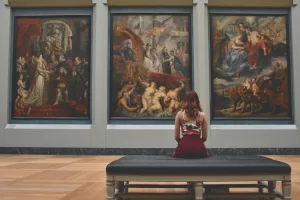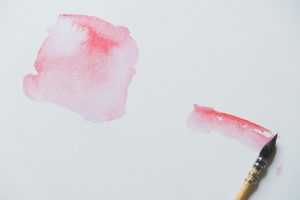Art projects can be complex and time-consuming, requiring careful planning and organization to ensure a smooth workflow. By establishing an effective workflow, artists can streamline their process, save time, and produce high-quality work consistently. One key aspect of setting up an effective workflow for art projects is defining clear goals and objectives. Before starting any project, take the time to outline what you want to achieve, what resources you will need, and what the timeline for completion will be. This will help keep you focused and on track throughout the project.
Define Your Artistic Vision
Before diving into the nuts and bolts of project management, it’s crucial to get a clear picture of your artistic vision. This means not just having a vague idea but crafting a concrete statement of what you want to express. Think about the themes, emotions, or messages you want your work to convey. This clarity will guide every decision you make, from materials to methods.
Crafting Your Artist Statement
An artist statement isn’t just for galleries or exhibitions; it’s a powerful tool for your personal clarity. Start by answering these questions: What inspires you? What themes do you explore? How does your work relate to your experiences or environment? Putting these thoughts into words helps crystallize your vision and keeps you anchored during the creative process.
Consider Your Audience
Who are you creating this work for? Understanding your audience can dramatically influence the direction of your project. Are you aiming for a gallery exhibition, a commercial client, or personal satisfaction? Each of these scenarios will require different approaches and considerations.
- Gallery Exhibition: Focus on originality and thematic consistency. Consider what might attract curators and audiences alike.
- Commercial Client: Emphasize meeting the client’s brief while infusing your unique style. Understand their brand and target audience.
- Personal Satisfaction: Allow yourself freedom and exploration. This is an opportunity to take risks and push boundaries.
Utilize Project Management Tools
Project management tools can be invaluable for keeping track of deadlines, tasks, and resources. Platforms like Trello, Asana, or Notion offer features such as task lists, calendars, and collaboration tools that can help you stay organized and efficient. These tools allow you to break down your project into smaller tasks, set deadlines, and track progress, ensuring that nothing falls through the cracks.
Integrating Technology Into Your Workflow
Beyond basic project management, consider how technology can assist in your creative process. Digital sketching apps like Procreate or Adobe Fresco can be used for initial drafts, while Pinterest boards can serve as mood boards for inspiration. Utilizing these tools can enhance your creativity and ensure you stay organized.
- Digital Sketching: Transitioning your initial ideas to a digital format can make revisions easier and faster. Features like layers and undo options provide flexibility that traditional methods might not.
- Mood Boards: Create thematic boards on platforms like Pinterest or Milanote to gather visual inspiration. This can be particularly helpful in maintaining a cohesive aesthetic throughout your project.
Establish a Routine
Consistency is key when it comes to art projects. Establishing a routine and setting aside dedicated time for your creative work can help you maintain momentum and focus. Whether it’s dedicating a few hours each day to your art or setting specific days for different stages of the project, having a routine can prevent procrastination and ensure progress. A consistent schedule can also help you get into the creative mindset more easily and maintain a steady workflow.
Finding Your Peak Creative Hours
Everyone has times of day when they’re most creative and productive. Pay attention to when you naturally feel inspired. Is it early in the morning, or do you find yourself more creative in the late evening? Tailor your routine to align with these natural peaks in your creativity.
Building a Creative Environment
Your physical workspace can significantly influence your productivity and creativity. Organize your studio or work area to minimize distractions and optimize comfort and functionality.
- Lighting: Ensure your workspace has ample natural light. If that’s not possible, invest in quality artificial lighting that mimics daylight to reduce eye strain.
- Ergonomics: Comfortable seating and an adjustable desk can prevent fatigue and physical strain, allowing you to work longer without discomfort.
- Inspiration Corner: Dedicate a section of your space to display inspirational items like prints, sculptures, or artifacts that ignite your creativity.
Break Down the Project into Manageable Tasks
Large art projects can seem overwhelming, but breaking them down into smaller, manageable tasks can make them more approachable. Create a detailed work breakdown structure that outlines the steps needed to complete the project, and assign deadlines to each task to keep yourself accountable. This approach not only helps you stay organized but also allows you to track your progress more effectively and make adjustments as needed.
Prioritizing Tasks
Not all tasks are created equal. Use a priority matrix to determine which tasks are urgent and important, and which can be scheduled for later. This will help you focus your energy on what truly matters at each stage of your project.
- Urgent and Important: Tasks that must be done immediately to keep the project on track—like finalizing sketches for a client review.
- Important but Not Urgent: These could be exploration tasks like experimenting with a new technique that might enhance the project.
- Urgent but Not Important: Admin tasks like responding to emails can be scheduled at designated times to avoid interrupting creative flow.
- Neither Urgent nor Important: These are distractions—avoid these during peak creative hours.
Regularly Review and Adjust Your Workflow
It’s important to regularly review your workflow and identify areas for improvement. Reflect on what worked well in past projects and what could be done differently. Make adjustments to your workflow as needed to optimize efficiency and productivity. By being open to feedback and continuously fine-tuning your process, you can adapt to changing project requirements and improve your overall workflow.
Gathering Feedback
Feedback is invaluable. Don’t hesitate to share your work-in-progress with trusted peers or mentors. Constructive criticism can provide insights you might have overlooked and inspire new ideas.
- Feedback Sessions: Schedule regular critiques with a small group of trusted artists or mentors. This not only provides fresh perspectives but also mimics the feedback loop of professional artistic environments.
- Self-Assessment: After completing a project, take the time to evaluate your process. What stages felt rushed? Where did you lose momentum? Use this insight to refine future workflows.
Overcoming Creative Blocks
Creative blocks are a common hurdle in any artistic endeavor. When you find yourself stuck, take a step back. Engage in a different activity, go for a walk, or switch to an entirely different creative project. This can help refresh your mind and spark new ideas.
Techniques to Break Through Blocks
- Change Mediums: If you’re stuck on a painting, try sketching or digital art to shake up your perspective.
- Timed Exercises: Set a timer for short bursts of creativity—say 15 minutes—to create without self-editing. This can often lead to breakthroughs.
- Mind Mapping: Use mind maps to explore themes or concepts visually. This can help in visualizing connections and generating new ideas.
Balancing Creativity with Business
For many artists, managing the business side of art can be challenging. Ensure that your workflow includes time for tasks like marketing, client communication, and financial management. Using a simple spreadsheet can help track expenses and income, keeping your projects profitable.
Essential Business Practices
- Marketing: Dedicate time each week to promote your work. This could be through social media, newsletters, or updating your portfolio website.
- Networking: Attend industry events or join online communities. Building relationships can lead to opportunities and collaborations.
- Financial Planning: Regularly update your financial records. Use tools like QuickBooks or even simple spreadsheets to track income, expenses, and project profitability.
Real-Life Case Study
Consider the workflow of renowned artist Jane Doe. She starts every project with a detailed sketch and color palette, using digital tools for initial designs before moving to canvas. She sets a rigid schedule, dedicating mornings to creative work and afternoons to administrative tasks. Her use of Trello for task management and regular feedback sessions has significantly increased her productivity and success in exhibitions.
Lessons from Jane Doe
- Structured Flexibility: While Jane adheres to a schedule, she remains flexible, allowing spontaneous bursts of creativity to guide her when inspiration strikes.
- Feedback Integration: By incorporating regular feedback, she iterates quickly and effectively, reducing the need for major revisions later in the process.
- Dual Focus on Art and Admin: Jane’s balanced approach to creative and administrative tasks ensures her projects are both creatively fulfilling and commercially viable.
Embracing Flexibility
While having a structured workflow is essential, it’s equally important to remain flexible. Art is inherently unpredictable, and sometimes inspiration or project requirements can shift unexpectedly. Being open to change and able to adapt can make the difference between a stalled project and a successful one.
Strategies for Flexibility
- Iterative Process: Allow your workflow to be iterative. As new ideas emerge, be prepared to modify your plans to incorporate them.
- Contingency Plans: Have backup plans for potential setbacks, whether it’s a delay in materials or a sudden change in client requirements.
- Embrace Spontaneity: Sometimes the best ideas come from unplanned moments. Make room in your schedule to explore these creative tangents.
Building a Support Network
Don’t underestimate the power of community in your artistic journey. Connect with other artists through local workshops, online forums, or social media. Sharing experiences and challenges can provide new perspectives and invaluable support.
Networking Tips
- Join Local Art Groups: These can be found through community centers or art schools and provide opportunities for collaboration and critique.
- Online Communities: Platforms like DeviantArt or Reddit’s art communities offer a space to share work and receive feedback from a diverse audience.
- Mentorship: Seek mentors who can provide guidance and share industry insights. A mentor’s experience can be invaluable in navigating complex projects or career decisions.
Final Thoughts
By implementing these strategies and techniques, artists can establish a robust workflow that enhances creativity, efficiency, and overall project success. A well-organized workflow not only improves the quality of work produced but also helps artists stay motivated and inspired throughout the creative process. With the right planning, tools, and habits in place, artists can navigate the challenges of art projects more effectively and consistently produce work that reflects their vision and creativity.
Creating art is as much about the journey as it is about the final product. By taking control of your workflow, you’re not just managing tasks—you’re crafting an environment in which your creativity can thrive. Whether you’re working on a solo exhibition, a client commission, or a personal passion project, an effective workflow is the foundation upon which your artistic endeavors can flourish.



